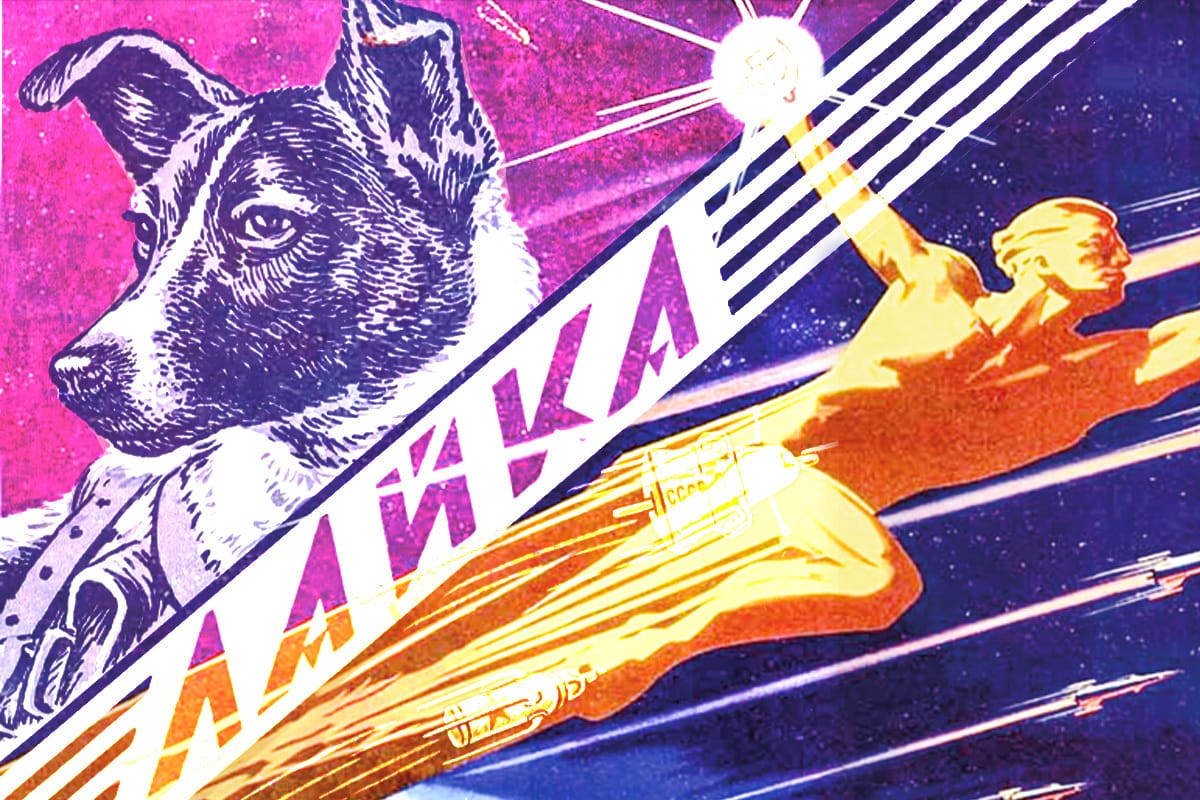When Laika the dog was being put aboard Sputnik-2 on 3 November 1957, her adopted family of Soviet scientists was in tears as they kissed her little nose.
The night before, Vladimir Yazdovsky took her home to play with his children. “Laika was quiet and charming … I wanted to do something nice for her: She had so little time left to live.”
The ethics of her flight notwithstanding, Laika made history as our illustrious trailblazer into the stars.
She was among many firsts achieved by the Soviet space programme. Her feat came a mere month after Sputnik-1, the first artificial satellite, struck terror in the hearts of capitalists of the world.
“Stayputnik”
The CIA and US scientific elites were dumbfounded. American rockets at the time could achieve 150,000 pounds-force of thrust – and yet the legendary beeps of Sputnik-1 were successfully carried into orbit with near 1,000,000 pounds of thrust.

Capitalists scrambled to show that the free market could deliver such successes too. John Jefferies of the High Altitude Observatory recalled:
“The week after Sputnik went up, we were digging ourselves out of this avalanche of money that suddenly descended.”
This resulted in the Vanguard TV-3 satellite mission, which lasted a literal two seconds before exploding. The media globally dubbed the American project: “Stayputnik.”
The Soviet Union, meanwhile, set many more milestones.
Soviet successes
Luna-1 was the first human-made object to fly by the Moon, which to this day orbits the Sun as the first ‘artificial planet’.
Korabl-Sputnik 2 took Belka and Strelka, canine comrades of Laika, safely into space and back making them first successful cosmonauts.
Venera-4 explored the nightmarish hothouse of Venus, while Mars-3 sent a signal across 140,000,000 miles of space that it had landed safely on the Red Planet.
As part of the Interkosmos programme, many less developed nations were invited to send their first cosmonauts aboard Soviet missions: Poland, Romania, Cuba, Afghanistan, India, and more.
The first Brit in space, Helen Sharman, was one of the final beneficiaries of the programme, flying aboard the Soyuz TM-12 mission in 1991.
Yet today, our dreams taking humanity into the stars lie long shattered.
‘Rockets betrayed’
All the above tremendous achievements of the planned economy have since been overshadowed by the grinding decline of the Soviet economy during the 1970s and 80s.
Where the bureaucrats and apparatchiks could manage an economy of big projects and heavy industry for a period, the modern economy of light industry and consumer goods cannot be efficiently managed from an office in Moscow.
As Leon Trotsky so lucidly remarked in his prescient Revolution Betrayed: “a planned economy requires democracy just as the human body requires oxygen.”
But the Stalinists could not allow this.
And so as the economy failed they decided instead to exchange party cards for investment portfolios, and parcel out the remaining scraps from the great conquest of October into the hands of capital. The first workers’ state ceased to exist.
Yet to this day, capitalists are using the conquests of Soviet science in their space missions; the International Space Station is entirely powered by Soviet engines.
Exploration not exploitation
These advances have even seeped out into the private sector, contributing to the grotesque spectacle of Elon Musk, Jeff Bezos and Richard Branson competing in their billionaire’s space race.
But this heritage belongs to us. Generations of Soviet workers did not develop the science, technique and resources needed for space exploration to serve as playthings for capitalist parasites.
These comrades of ours were looking boldly towards the future of humanity beyond any horizons – one of the cult songs of the period, for example, imagined planting apple orchards on Mars.
With democratic workers’ control over our planet, we can not only fix the problems of our world, but allow that dream to live on and to go boldly where no man (nor dog) has gone before.






